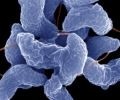Researchers develop risk-ranking system for food safety
Food safety has been at the top of the agenda in the US lately, following a spate of food safety scares, most recently the salmonella outbreak linked to peanut products. Reliable ways to assess risks at different points of the food chain are vital in preventing this kind of public health crisis.
The researchers wrote in the latest Journal of Food Science thatalthough there are food safety risk assessments available, they are not typically designed toquantitatively compare and rank risks of different food safety hazards. They said that this isdue to the complexity of the calculations and comparisons required.
Simplified process
They aimed to simplify this process, by developing a system that analyzes different doses of microbes and chemicals and relates them to their potential impact on public health.
The prototype framework is designed to help food safety policy makers and risk analysts to assess the comparative potential risk to public health of different combinations of specific hazards and foods.
The researchers wrote: “A well-conceived strategic approach to public health protection that quickly and accurately identifies different types of hazards, ranks them by level of importance, and identifies approaches with the greatest potential to reduce hazards is critically needed.”
Although it is still in the prototype stage, the researchers claim that the system addresses this need.
Stage-by-stage risk assessment
It has been designed to generate risk report summaries that can take into account per capita consumption of foods according to different population groups, and it considers three stages of the food production process: Primary production; processing; and distribution, storage, retail and home. It also allows the user to assess how likely it is that a hazard will be introduced at each stage.
The researchers hope that the use of the risk ranking system could help policy makers and risk managers to evaluate the potential to establish control points on different foods’ paths from farm to fork.
“The successful production of this risk-ranking prototype holds tremendous potential as a unique tool capable of comparing microbial hazards and chemical hazards not only separately but also comparatively,” they wrote.
The researchers then tested various hazard-food pairs against its prototype system – such as arsenic and smoked salmon, listeria and milk, and salmonella and raw oysters – in order to show that the system’s calculations were sound.
Source: Journal of Food Science, Vol. 00, Nr. 00, 2009
“Development of a Risk-Ranking Framework to Evaluate Potential High-Threat Microorganisms, Toxins, and Chemicals in Food”
Authors: R. Newsome, N. Tran, G.M. Paoli, L.A. Jaykus, B. Tompkin, M. Miliotis, T. Ruthman, E. Hartnett, F.F. Busta, B. Petersen, F. Shank, J. McEntire, J. Hotchkiss, M. Wagner, D.W. Schaffner.














